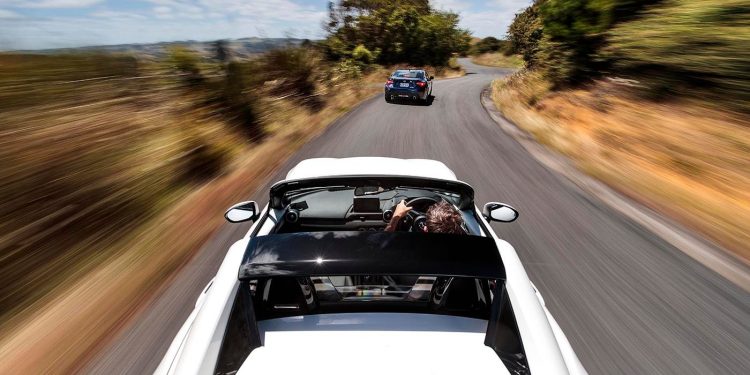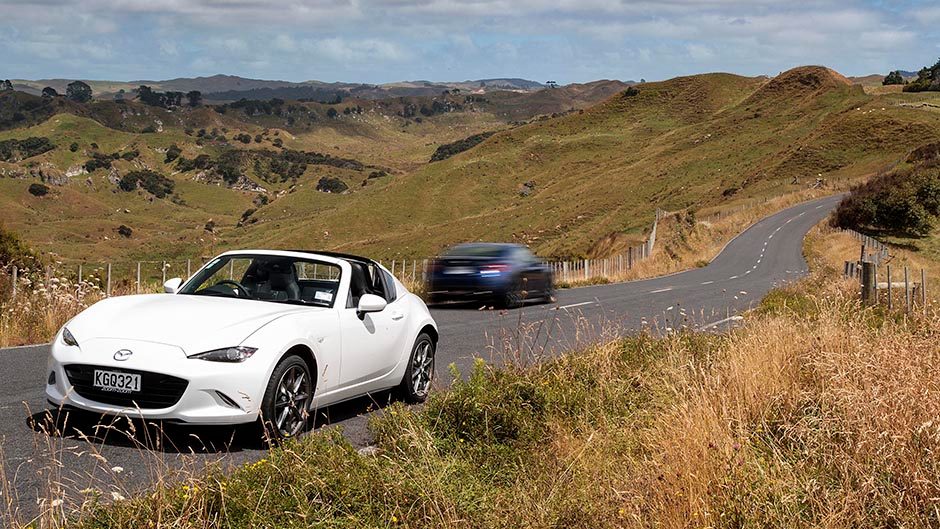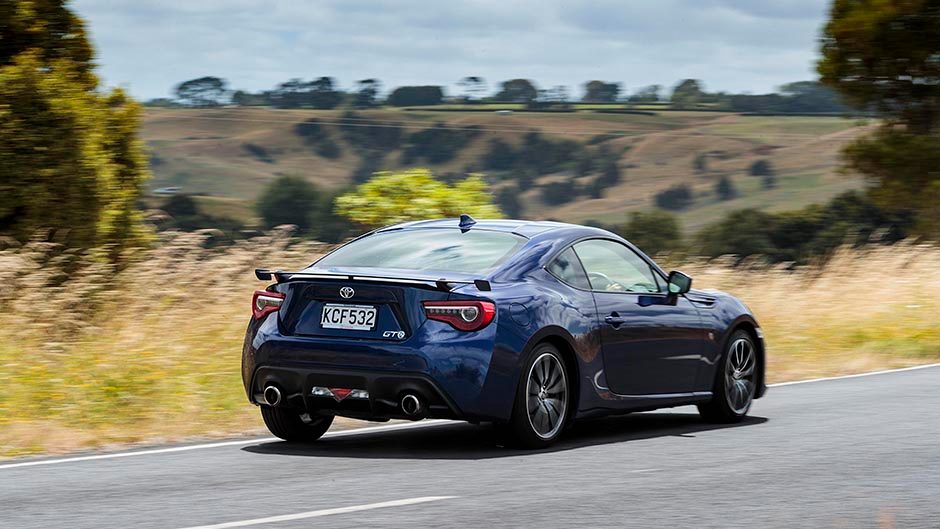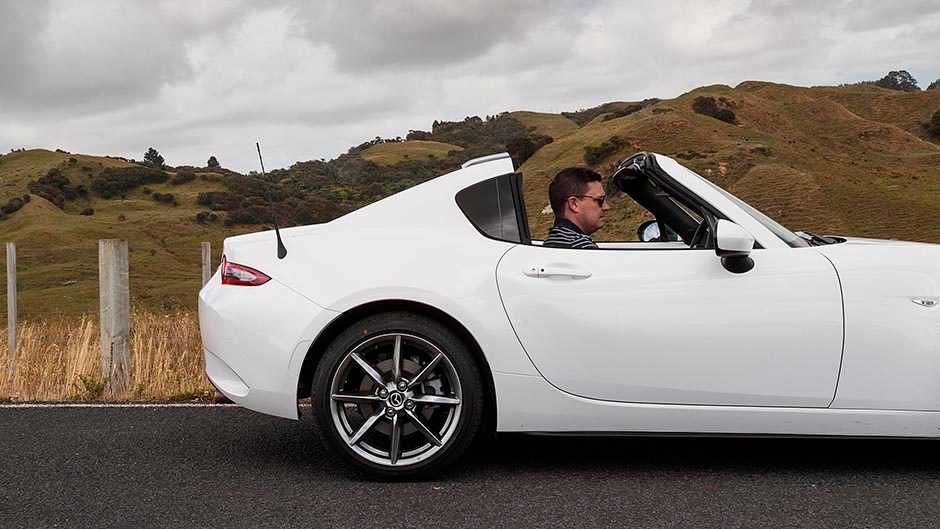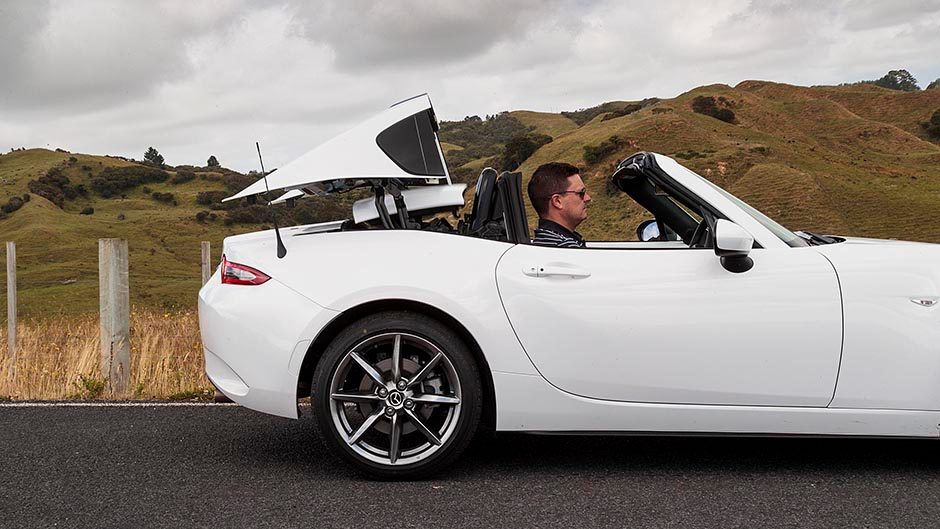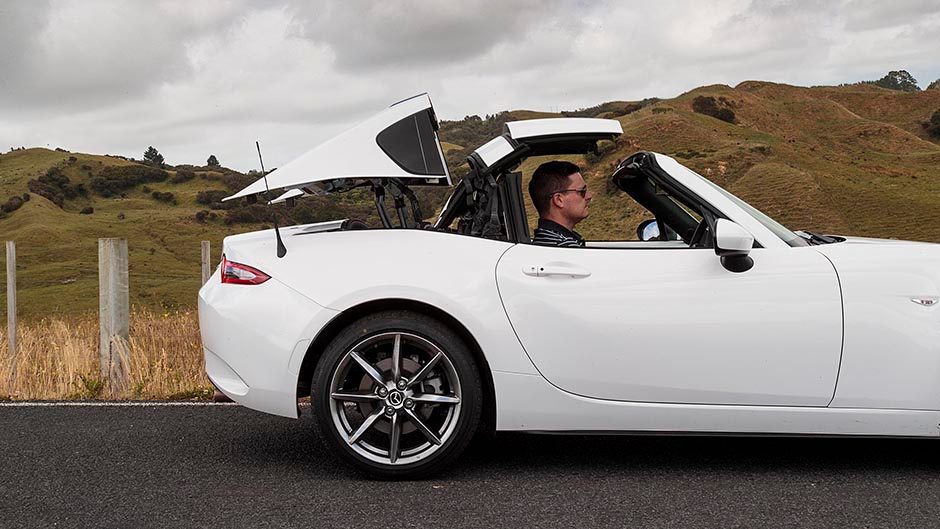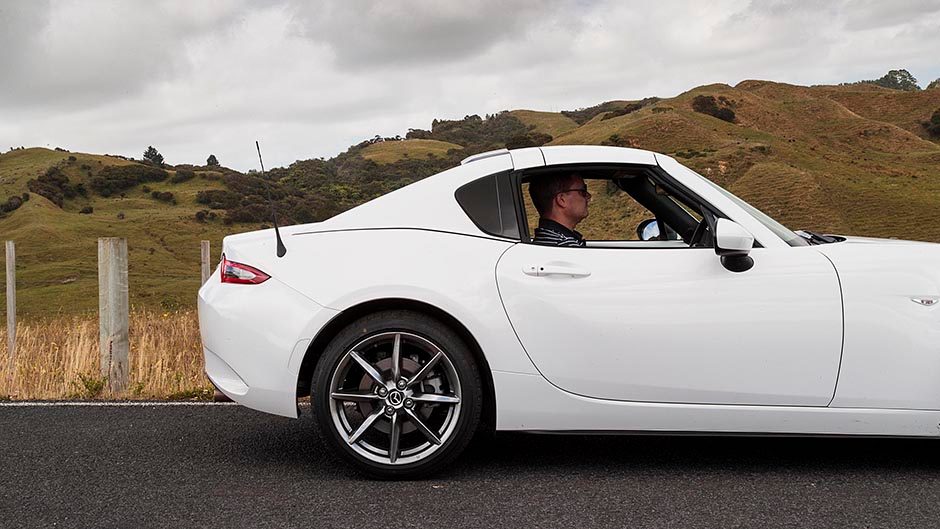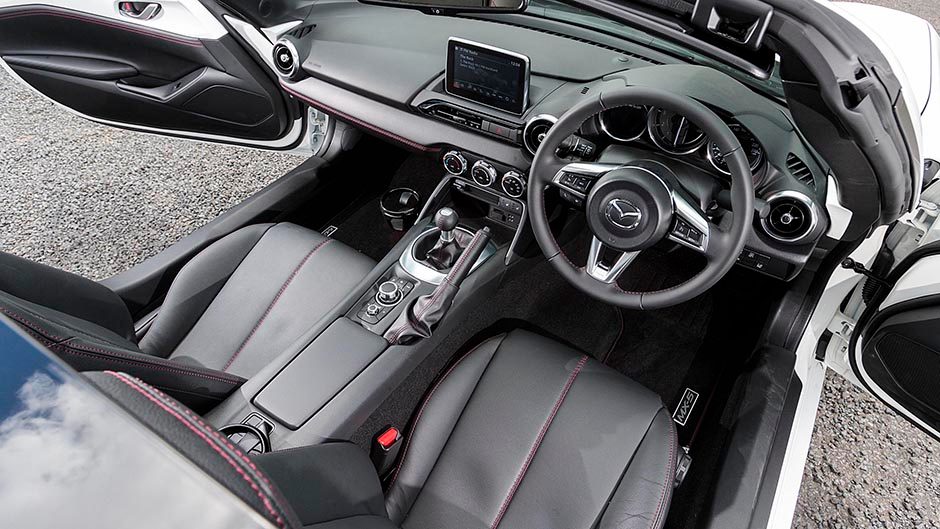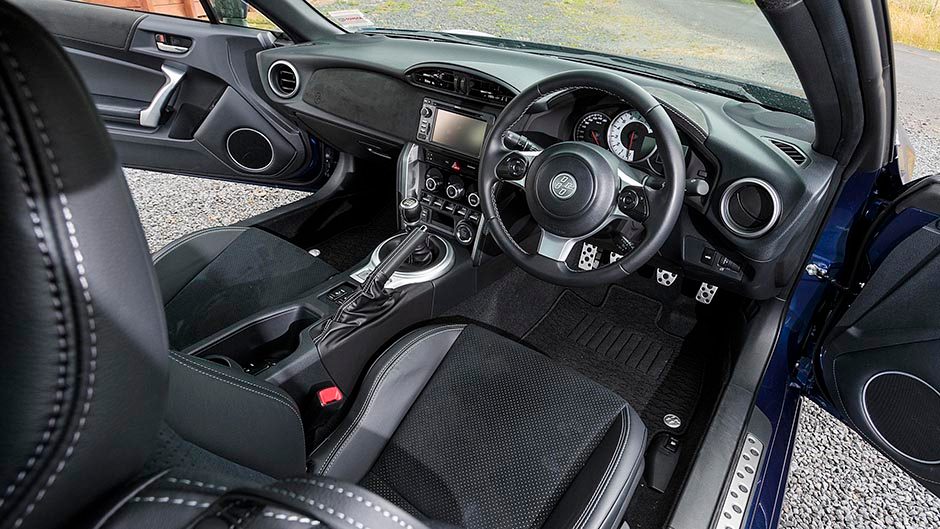2017 Mazda MX-5 RF vs Toyota GT86 comparison
Words: Kyle Cassidy | Photos: Tom Gasnier
Not many cars still have the driver at their heart, but these two are all about the one seated behind the wheel. We compare the refreshed 86 with the new hard-top MX-5 RF
The Toyota 86 and Mazda MX-5 are cars we like to champion; they are for drivers and both have charming characters. Given the 86 has been recently updated and Mazda has added the Retractable Fastback to its MX-5 range, we got them together to, well, spend a couple of days blasting about the place, enjoying having our fave roads back to ourselves now that the vacationing day trippers are back into the daily grind.
Both the 86 and MX-5 are designed for drivers who enjoy taking on a twisting road, revelling in the interplay with such focused machines. These two rely on simple ingredients; low, centralised mass kept to a minimum with an even weight split, wheels pushed out to the corners and suspended with enough compliance to deal with the bumps. They aren’t packed with poke but their power-to-weight equations make them energetic performers. They are more about what happens in the bends than how fast they scamper down the straights. But enough with the introductions; now to the players.
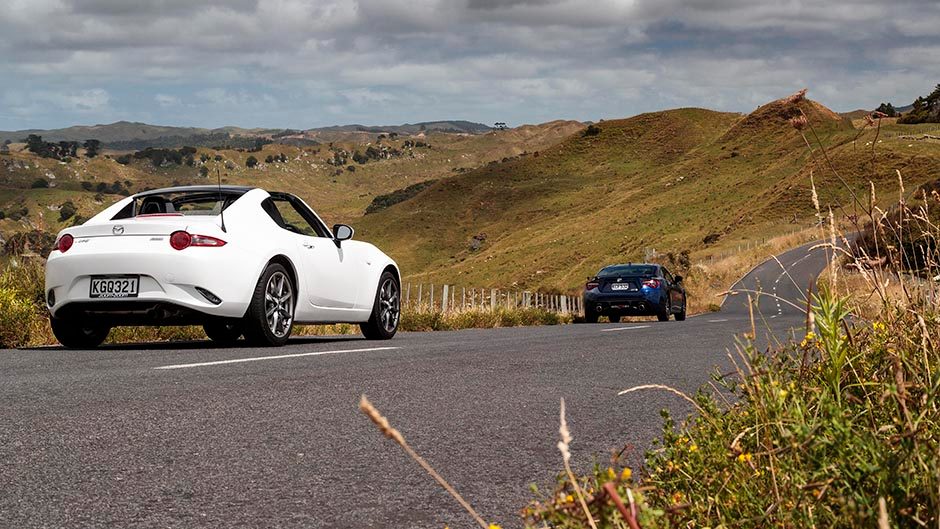
RF – a new hard-top take
The MX-5 RF comes along 18 months after the Roadster to help rekindle the sales embers. Sportscars have a brief honeymoon period before sales start slowing and to help prospects the hard-top RF is expected to appeal to a slightly broader audience. Mazda has sold 134 of the new Roadsters here, most of those the 2.0-litre manual. The RF is now expected to make up 90 per cent of MX-5 sales going forward, the higher-spec auto expected to be the most popular. With that in mind, the Roadster is now manual-only. The RF starts at $48,495 for the auto-only GSX while the RF Limited is $51,495 and $52,995 for the auto. With the 2.0-litre manual Roadster at $46,995, there’s a decent premium for the RF.
The three-piece roof is a clever design in both engineering and style, giving the convertible a unique look while the top disappears into the same space as the Roadster’s. And so the RF has only three litres less luggage space than the soft-top at 127L. The top of the roof and rear glass are stowed with the rear section of the fastback resetting itself on the flanks to produce a targa look in profile. The process takes 13 seconds and adds 47kg to the overall weight of the MX-5. While the conversion can be done at speeds up to 10km/h, it’s actually not that helpful. It’s all automatic though, no latches to undo, just a button to press and hold.
Most of the other panels and dimensions remain the same as the Roadster’s, the RF being just 5mm taller overall. To improve the coupe-like experience there’s a three-layer headliner, more body sealing and extra layers of sound insulation. It’s quieter than the rag top, but not quite as hushed on the move as a proper coupe. There’s a larger air deflector behind the headrests to minimise buffeting with the roof retracted but there’s a fair bit of wind noise, which is usually the case with a targa-like arrangement.
The RF is a slightly softer take on the MX-5 with an eye to appealing to a wider audience and so the ride has been relaxed. It has the same front double wishbone and rear multi-link suspension arrangement but the front stabiliser bar and rear springs have been softened while the damper rates have been revised to account for weight. The steering has been retuned as well with an increase in assistance. The 2.0-litre carries over with 118kW and peak torque of 200Nm at 4600rpm and with the manual is good for a claimed 7.0L/100km.
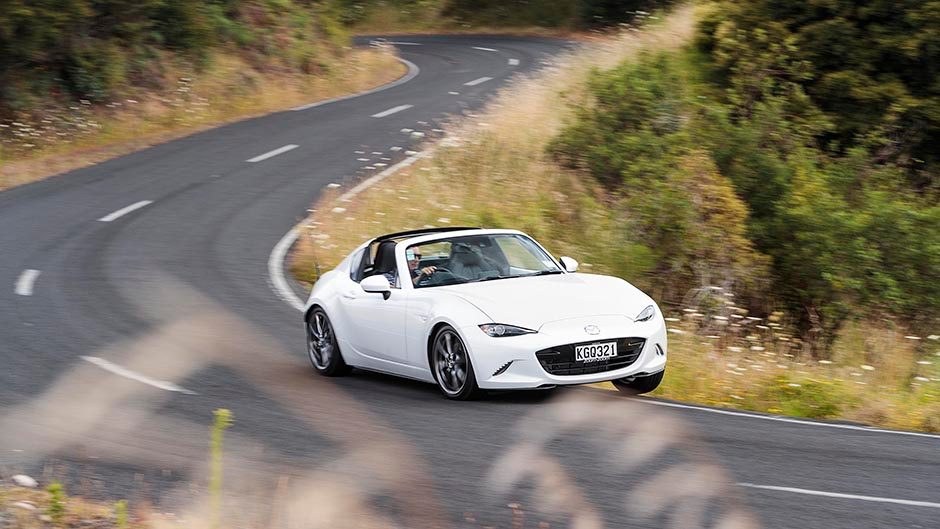
86 updated for ’17
The 86 gets a mid-life spruce-up for 2017 with tweaks to styling, dynamics and the powertrain. The three variant range consists of the manual-only 86 at $46,986 and the higher-spec GT86 in manual ($51,986) or with a six-speed automatic for $52,986.
Buy the manual and you’ll get a revised engine. Along with a new intake and exhaust, the stiffer engine block houses new pistons. Power from the flat four is up a smidge to 152kW, with 212Nm at a peaky 6400rpm. There’s been a change to the final drive as well, while overall consumption is rated at 8.4L/100km. The engine in the auto GT86 carries over.
Toyota has fiddled with the springs and dampers of the Mac strut front and double wishbone rear suspension to help improve stability and ride comfort, and there’s a thicker rear bar to help neutralise understeer. They’ve upped the size of the brake discs and there are new 17-inch wheel designs.
Speaking of style, there’s a new front-end which is said to have lowered the profile of the nose, while a fresh grille helps improve the idea of width. There are new lights front and rear incorporating LEDs. The rear bumper has changed and there’s that new aluminium spoiler too. The cabin has a smaller steering wheel and the dials now incorporate a multi-information display, including a digital speed read-out in the reworked tacho, which is still front and centre but with the redline positioned at 12 o’clock. There’s a suede-like covering on the door tops and dash, Alcantara seat accents and two additional conveniences are a standard reversing camera and hill holder.
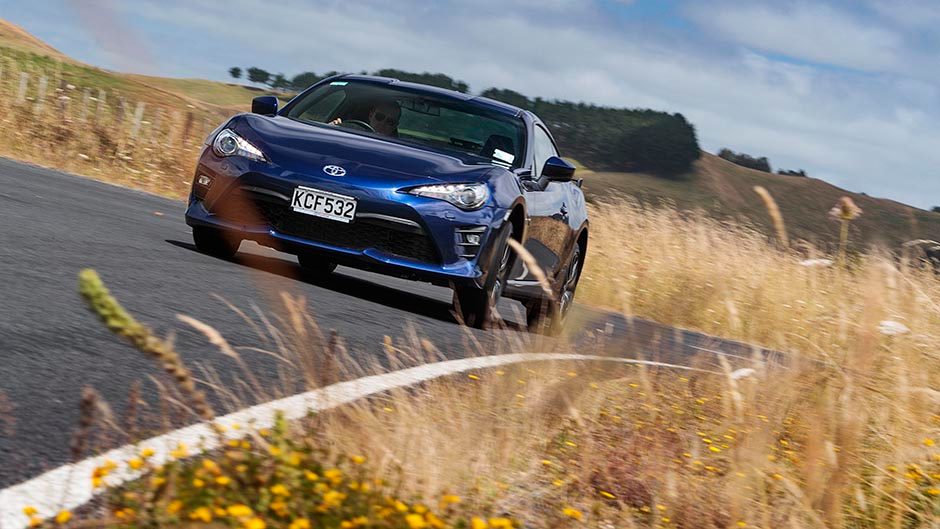
Into the action
Even along city streets these two impart an immediate connected feel, their responses crisp, the whir of mechanicals readily apparent. And after swags of high-riding utes and SUVs, their low slung seating positions feel more in tune with the process of driving. The four-cylinder engines compose more noise than your usual four pots, both abetted with a sound pipe channelling the induction babble into the cabin, the 86 a little rowdier with its boxer beat. Look under the bonnet and neither engine hides under an acoustic shield, while the abundant Subaru references in the 86’s bay remind us of the car’s true origins. Both have feelsome clutch pedals and exacting shifters that are notchy when cold but gel sweetly when the oils warm.
They can feel a tad frenetic on a cruise, engines buzzing away above 2500rpm in top at 100km/h, but it’s not long until we head off the motorway to roads where these machines shine. While similar in effect, their engine characters differ. The 86’s four demands the lash, uninterested in anything below 3500rpm but zinging happily past 6500rpm where the peak outputs lie. The Mazda has much more going on in its midrange and feels faster for it. It too will wind on happily but runs out of puff past about 6200rpm. Both are about as fast as each other against the clock, but bingeing on revs, the 86 is thirstier (8.7L/100km for the Mazda vs 11.8).
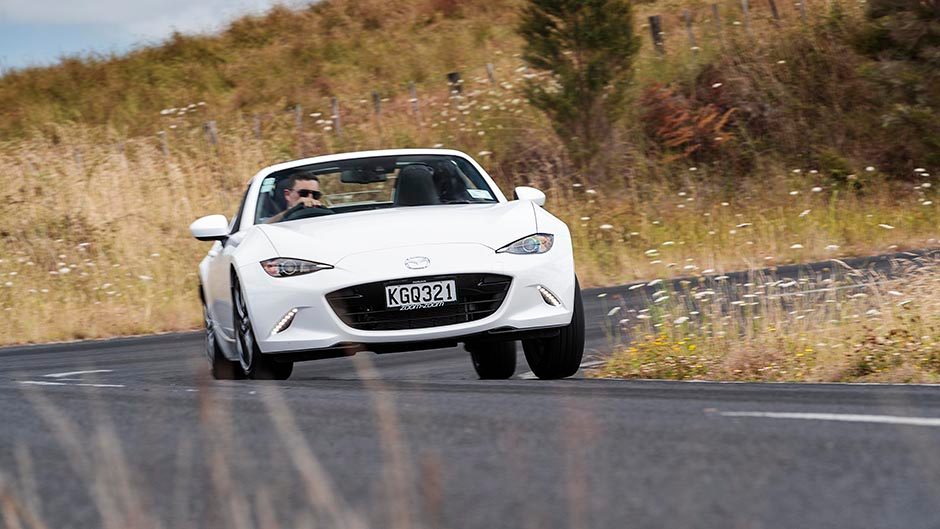
Bendy bits
Through the interesting bits, it’s best to switch the newly devised Track DSC mode on for the 86 as there’s way too much electronic interference otherwise. The Track setting allows for freer exploration of the limits without being told off repeatedly. A classic approach to corners works best in the 86; a dab of the brake before the entry to settle the nose and weight up the front tyres along with a quick downchange to keep the engine buzzing in the power zone before whistling through. If you’ve done it right the rubber will begin to chirp as you round the bend and with a long travel throttle pedal, it’s easy to gas up quick and smoothly off the curve without upsetting the rear.
The MX-5 RF is set more softly than the GT, and along with a more compliant ride that better rides the bumps, there’s more roll. It looks dramatic in the pictures, but once the RF leans over and takes its set, it carves through corners. Being lighter helps, its compact dimensions adding to its nimbleness. And so despite its smaller footprint in terms of both tyre and track widths, it manages to carry the same momentum through the curves. It’s not so crucial to transfer the weight onto the nose of the MX-5, the front end responding more smartly than the 86, despite its relative softening in RF tune. And it is a softer experience than the Roadster. In the 2.0-litre rag top you can roll into the throttle mid-bend and rotate the rear to negate any push whereas the RF tends to slip into understeer, it’s set-up tailored for a less enthusiastic driver. But the RF still manages to hold its own against the 86, possessing as it does that delicious deftness and balance that is the essence of the MX-5.
The Toyota has more heft to its helm, and a jot more feedback. The RF has lighter steering but like the 86 the assistance is well tuned and the sense of the road is intact; both turn sweetly without the need for any variable ratio trickery. The 86 has a firmer feel and better response to its brake pedal, while the gearbox actions in both take kindly to a firm hand, the 86’s a bit quicker through the gate.
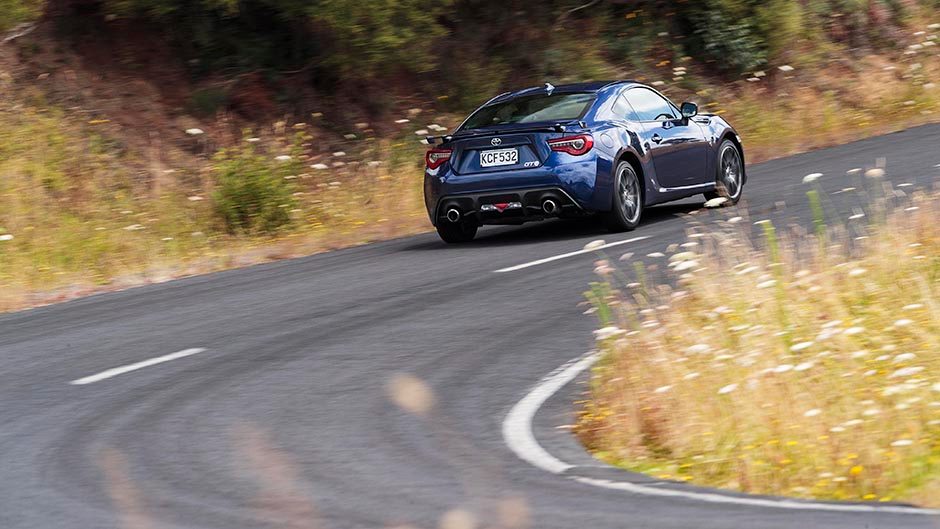
Everyday fun
You’ll buy neither for practical reasons, but the 86 at least has the pretense of a back seat while the boot space is greater too, and there’s the ability to expand it by dropping the seat back. The Toyota allows for more adjustment of the driving position, so will suit more body types, especially taller folk; you won’t fit in the RF if you’re much over 180cm.
The MX-5 has an intimate cockpit, which has precious little storage but great cupholders given the tight space. A reversing camera should have really made the grade for the RF, preferable to a lane departure warning system, though the blind spot monitoring is handy, its absence noted in the 86. The heated seats will be good for topless winter fun.
Final thoughts
While cars like the 718 Boxster are a sensation, they have become very expensive and almost too fast. The MX-5 RF and 86 are one-third the price and more of their potential can be exploited on road. Both are stellar examples of enthusiast’s machines. We tended more toward the experience behind the wheel of the more intimate and lighter MX-5, but also revelled at the physical approach of the 86, begging to be worked and rewarding equally.
But we wouldn’t buy the RF. Give us the lighter, cheaper and more focused Roadster thanks. However, we do like the look and get the appeal of the RF, which is well tailored towards attracting a broader range of buyers.
| Model | Mazda MX-5 RF Limited | Price | $51,495 |
| Engine | 1998cc, IL4, DI, 118kW/200Nm | Drivetrain | 6-speed manual, rear-wheel drive |
| Fuel Use | 7.0L/100km | C02 Output | 164g/km |
| 0-100km/h | 6.98sec | Weight | 1099kg |
| Model | Toyota GT86 | Price | $51,986 |
| Engine | 1998cc, flat 4, DI, 152kW/212Nm | Drivetrain | 6-speed manual, rear-wheel drive |
| Fuel Use | 8.4L/100km | C02 Output | 194g/km |
| 0-100km/h | 7.10sec | Weight | 1253kg |


